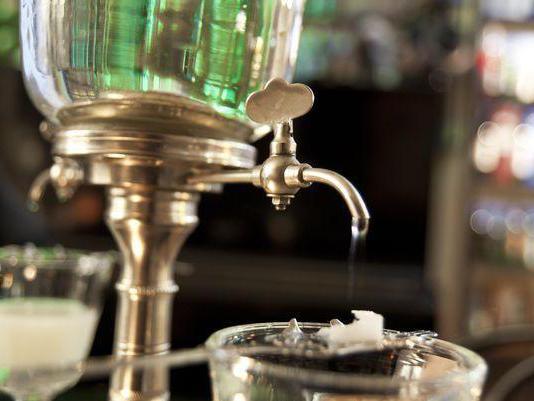Painting "Absinthe" - road to nowhere
Absinthe - strong alcoholic beverage (over 72degrees), which was prepared on the basis of wormwood with the addition of mint and anise. This cheap alcohol appeared in the eighteenth century and was first popular among ordinary workers because of its cheapness. Then it became widely used in bohemian circles. But absinthe is a hallucinogen, it caused aggression and addiction, like addiction, and severe convulsions. His use was banned in 1915. Under the brand "Pernod" it is produced until the present days.
Painting "Absinthe"
In France, it is assumed that for the first time the work wasexhibited at the second exhibition of the Impressionists, entitled "Absinthe". In 1876, part of the impressionists refused to attend the favorite café of Courbet "Gerbois", where it was too noisy. They began to meet on Pigal's dance at the cafe "New Athens". Edgar Degas, the author of the painting Absinthe, portrayed his friends - actress Ellen Andre (who in life was a well-groomed woman, served as a model and Renoir, and Gervais, danced in the Folies-Bergeres) and painter Marcelin Debuten. Debuten squandered his considerable fortune, fame as an artist did not receive and gradually descended. The work illustrates the mores of Parisian life, raises the problem of alcoholism, which was described by other artists, including the writer E. Zola. Show the life of "beautiful" the artist did not aspire. He allowed the viewer to peer into the realities that surrounded him.

Image analysis
In bohemian Paris, two suffer from loneliness,even being near. Their faces are gloomy. They have the appearance of people who are detached from reality. Both are dressed sloppy, especially a man. He does not look at his companion, his face is puffy from the fact that he regularly drinks. Around a man a tall glass with a mazargan. This drink was used to remove the hangover. The woman has an extinct absent look, her shoulders are lowered, her face pale because of abusing absinthe. Legs are ugly stretched forward. She does not follow them, and they are placed in a vskorjachku. Before her, apparently, is not the first glass with a cloudy-greenish absinthe. His model draws water from a bottle, standing on a nearby table. Their privacy is emphasized by compositional construction. Degas placed the pair on an inclined plane. This is a tribute to fashion. In Europe, then everyone was addicted to Japanese engraving with its unusual perspective and surprisingly accurate drawing. In addition, the pair occupies only the right corner of the picture, the remaining two-thirds are half-empty tables. They have newspapers, matches, an empty bottle. Even with complete solitude, the two still retain the inner closeness of these people. They share one thing - the loss of hope. The painting "Absinthe" is simply filled with hopelessness, which in no small measure intensifies the faded color.
At the exhibition in London
In 1872-1873 the picture was exhibited forThe Channel also aroused indignation of the well-intentioned Victorian public. Degas analyzed the scene without any complacency, a clear and critical look. Most of all, when considering his work, one remembers the naturalism of E. Zola, and possibly Toulouse-Lautrec. The painting "Absinthe" is in the museum of Orsay in Paris.
Work of Picasso
The theme of loneliness, isolation and emptiness in the cafe is notnew. In the second half of the XIX century it can be found in the works of Degas and Toulouse-Lautrec. But in the paintings of the young Spanish artist yet there was no sense of drama. Picasso has not yet moved to Paris. He happens here by arrivals from Barcelona. At the age of 22 he was attracted to the popular story, connected with the general obsession with absinthe. He was given special properties, allowing to awaken the imagination, push to a new perception of the world and creativity. Painting "Lovers of absinthe" Pablo Picasso has a very strong emotional impact.

van Gogh
In 1887, Van Gogh's painting "Still Life with Absinth" appears. He is laconic.

And the conclusion is the simplest.









